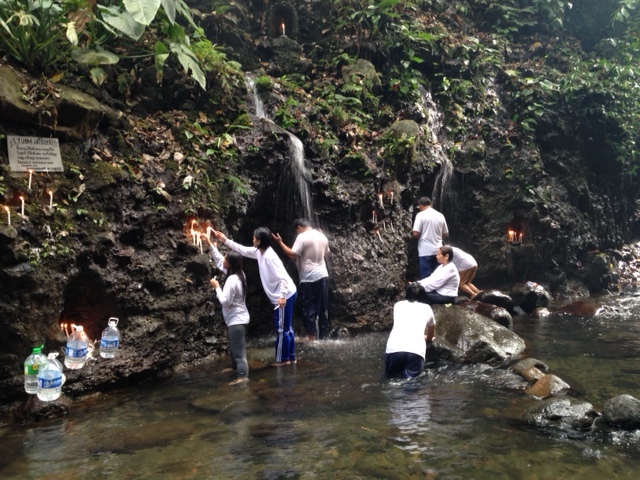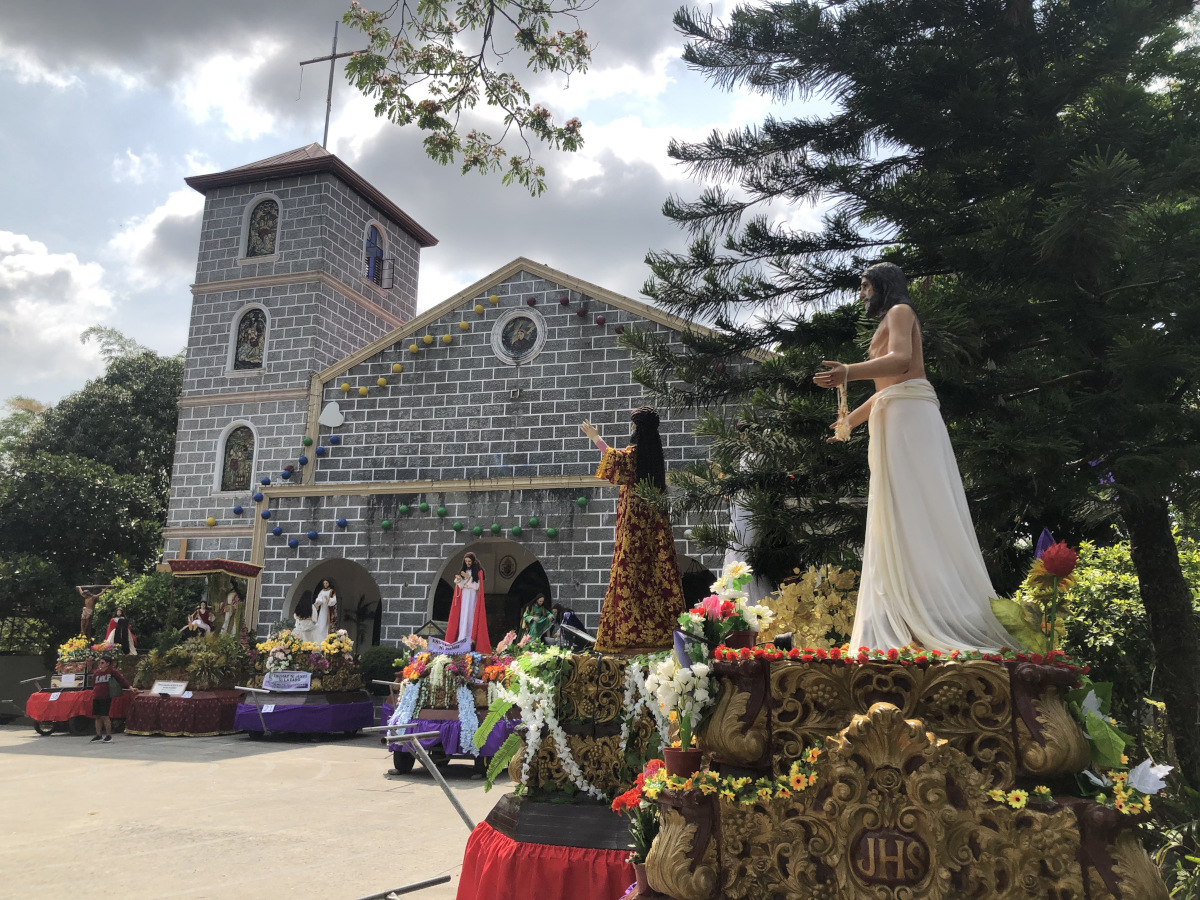DOLORES, Quezon—Around this time each year, hundreds of devotees flock to Barangay Sta. Lucia in Dolores, Quezon on the slopes of Mount Banahaw to celebrate Holy Week. Here, mysticism meets Catholicism, as members of various sects engage in what a local priest calls traditional spiritual practices at the height of the town’s Lenten rituals.
Bulk of the Holy Week pilgrims are members of an estimated 137 sects who come to Mount Banahaw and head for the Sta. Lucia River, which is said to have miraculous healing powers.
“Dito ako gumaling, sa tubig at saka sa pananampalataya (I was healed here, because of the water and faith),” said Leony Madera, whose anemia was cured after she took regular baths in the river.
Madera, 52, is a member of Jesus Nazareno Jove Rex Al Prayer Partner Movement International, Inc., one of the 137 religious sects in Dolores. Members of these sects troop to Banahaw to bathe in the river, lighting candles and praying for blessings.
Madera says she goes to the river whenever she is “called,” either in a dream or through gut feelings. “Ang binibigay sa mga taong ispiritwal, talas ng pakiramdam, talas ng pandama (What is given to spiritual people is a keen sense of feeling),” Madera says. “Naliligo kami pero hindi basta ligo, may kasamang dasal yun (We don’t only bathe, it is accompanied by prayer),” she adds.
Madera said her sect has seen the supernatural here in Mount Banahaw, the kind that gives off positive feelings. This is one reason she decided to move here from her hometown, Lopez.
But Our Lady of Sorrows parish priest Joseph Estremera said these practices are more tradition than Catholic faith. The sects call themselves Catholic, he said, but their realities are often different.
The Church does not agree with the sects’ practices but does not discredit their claims. “Doon nila naramdaman ang Diyos sa kanilang buhay, hindi mo naman pwede sabihin na mali yung kanilang paniniwala (They feel God’s presence through these practices, you can’t tell them their beliefs are wrong),” he adds.
Most of these devotees are not native to Dolores, Estremera said, but are from Bulacan, Pangasinan, Batangas and other parts of Luzon.
He says that although Holy Week in Dolores is associated with Mount Banahaw, the Catholic rituals here are much like they are in other places.
The celebration starts on the Friday before Holy Week, when Dolores holds its town fiesta, called Biyernes de Dolores. A statue of the Virgin Mary is paraded through the town while the residents pray, dance and sing around it.
The rest of the week is more traditional. Palm Sunday is observed and the priest blesses the palm fronds that people bring.
On Holy Tuesday, women from Munting Sambayanang Kristyano gather outside the church and read the pasyon. The Way of the Cross is scheduled on Holy Wednesday.
Triduo or the three-day preparation for Easter Sunday starts on Maundy Thursday, when devotees hold the traditional Visita Iglesia or church visits. On the evening of Holy Friday, the parish holds the procession re-enacting Christ’s funeral.
The priest blesses the kandilang pamasko on Saturday, symbolizing the resurrected Christ. After the service, devotees take part in the salubong when the image of the resurrected Christ meets the image of the Virgin Mary, and the veil representing her grief is removed.
At the Easter service early Sunday morning, hundreds of candles become the only source of light inside the church until the singing of “Gloria” when the rest of the lights are turned on, marking the resurrection of Jesus.
Text and photos by PATRICIA ISABEL GLORIA.
(The author is a University of the Philippines student writing for VERA Files as part of her internship.)





